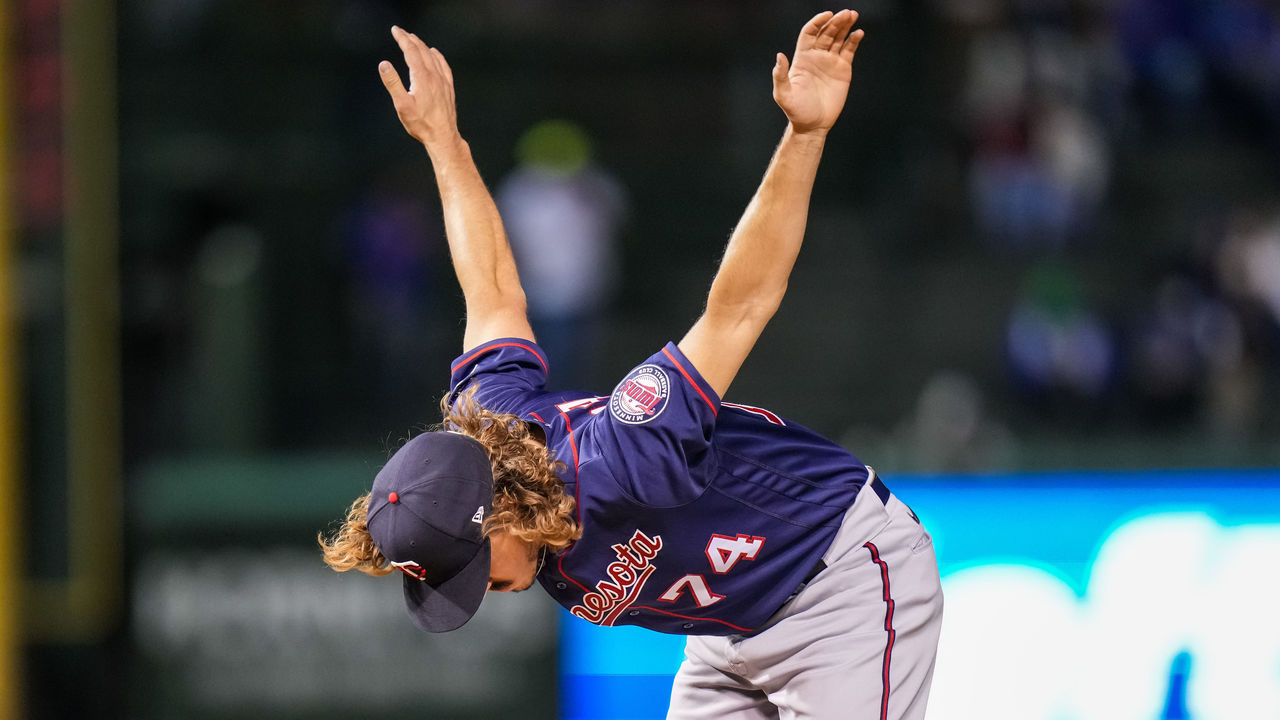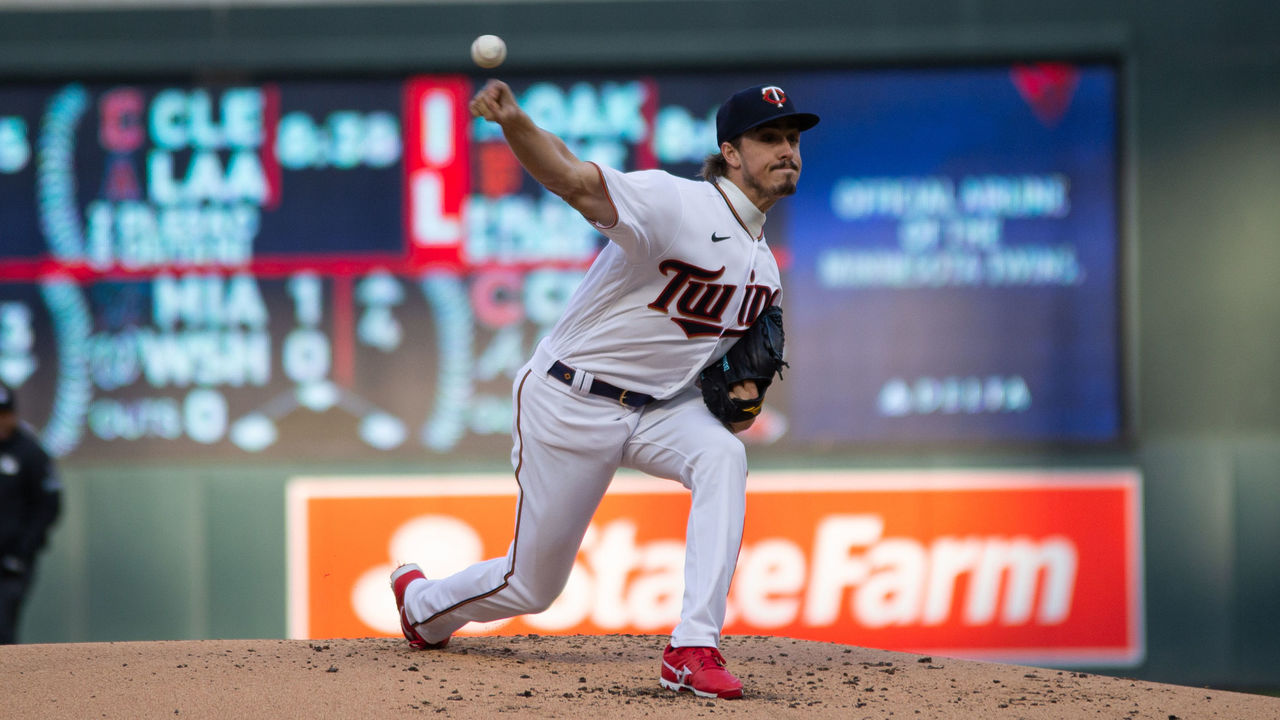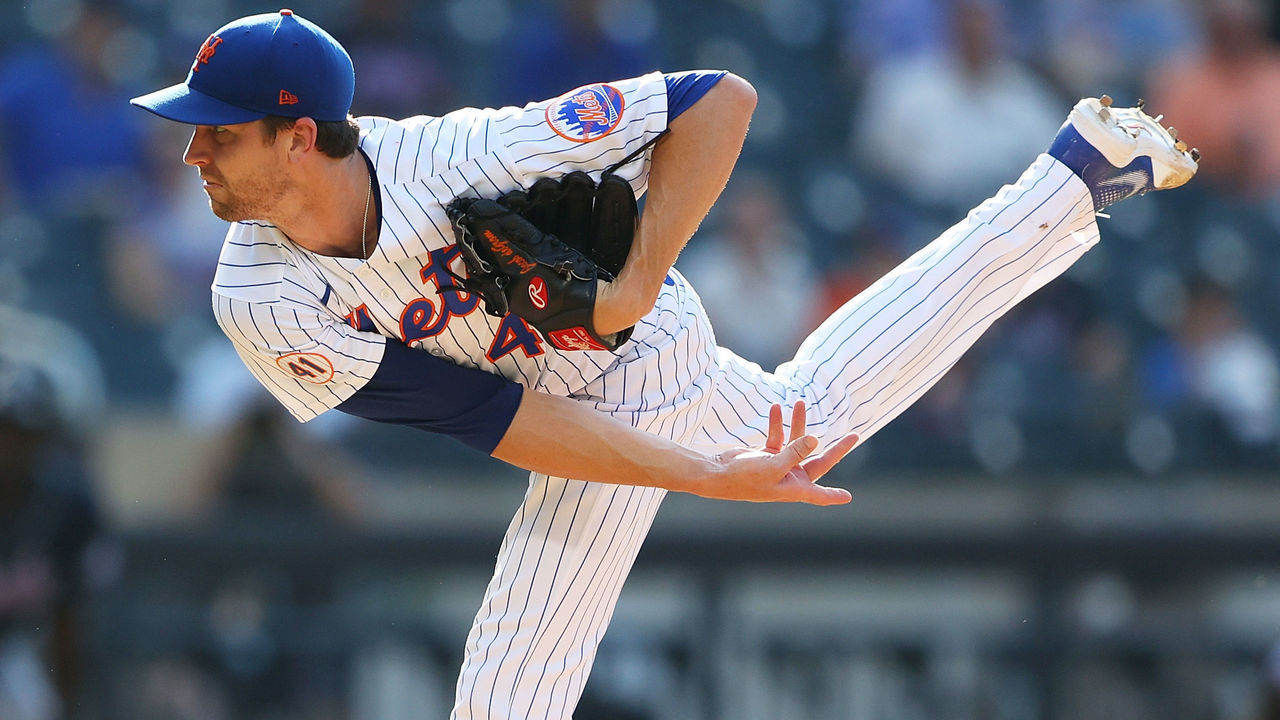How Joe Ryan and the Twins are succeeding with fastball deception
The last time a major-league pitcher got off to a start like Joe Ryan's was more than a century ago.
In tossing seven scoreless innings and allowing only two baserunners versus the Tigers on Wednesday, the right-hander lowered his career WHIP to 0.74 over his first nine career starts. Stats Perform tweeted that the mark is the lowest of any major leaguer through his first nine starts since Christy Mathewson (0.70) in 1900-01, back in the aptly called Dead Ball Era.
How Ryan is doing it is the remarkable part.
In an age of record pitch velocities and designer breaking balls, the Minnesota Twins right-hander is succeeding with below-average velocity and below-average spin. Baseball Savant ranks his fastball velocity (92 mph) in the 29th percentile this season, and his fastball spin ranks in the 41st percentile. Yet his overall whiff percentage (30.1%) ranks in the 84th percentile.
Only four major-league starting pitchers have a superior overall fastball to that of Ryan early this season, according to FanGraphs: Carlos Rodon, Alek Manoah, Tylor Megill, and Michael Lorenzen, each of whom throws with more velocity. Ryan has currently saved 5.3 runs with his fastball.
Of all MLB pitchers to throw at least 20 four-seams fastballs dating back to June 3, 2021, Ryan ranks in the top quarter of 700 pitchers in swinging strike percentage. He's not putting runners on base because of his excellent command and his ability to throw a sneaky fastball by hitters.
That date, June 3, is when MLB sent a memo announcing its intention to begin cracking down on sticky stuff - the spin-adding foreign substances - in an effort to reduce strikeouts.

Have Ryan and the Twins unlocked a secret in improving fastball performance? Ryan's rotation mate, Bailey Ober, has a similar pitching profile. Have they cracked a code in understanding fastball deception? Is it something that other teams and players can borrow from in a sticky-free era?
So, what is Ryan up to?
"I think it's just putting it in the right place, the vertical approach angle, and also where the ball comes out," Ryan told theScore during spring training.
Let's start with vertical approach angle.
Ryan first heard about vertical approach angle while pitching at Cal State Northridge, before the Tampa Bay Rays took him in the seventh round of the 2018 draft. He learned more about the idea with the Rays. (Tampa Bay traded Ryan to Minnesota for Nelson Cruz last season.)
Vertical approach angle is simply the trajectory at which a pitch enters the strike zone as it crosses home plate. The flatter the angle of a fastball, the harder it is to hit because the trajectory stays above a batter's own swing plane.

Among the 700 major-league pitchers to throw at least 20 fastballs since last June 3, about half, 339, have an average approach angle greater than minus-5 degrees (steeper approach). The other 329 had approach angles less than minus-5 degrees, or closer to zero, a flatter approach. The spin rates and adjusted spin rates of the two groups are nearly identical.
Those with the flatter planes averaged a 12% swinging strike rate with their fastball compared to 8% with steeper planes.
Analysis of the numbers with a simple linear model shows that vertical approach angle has a stronger correlation with swing and miss (about 17% of variance) than fastball velocity (about 11%). They both play a role, as does pitch location.
Ryan adds to the deception with his release point. Despite standing at just under the average pitcher's height of 6-foot-3, Ryan owns one of the lowest release points - only five feet above the mound.

Ryan said he never purposefully threw this way, it just felt natural in his youth, and he continued to develop that way after he turned pro.
"I probably just learned to throw that way over time, and just saw results, the swings and misses, and fell into those patterns," Ryan said. "I never really noticed it until I got to pro ball and people were like, 'You have a really low release point.' ... And as I've learned more about it, I've tried to pay attention to it a little more, just try and keep that arm slot, and just throw how it feels natural for me."
What Ryan does is similar in some ways to how Chris Bassitt found success with modest fastball spin and velocity, and how Jacob deGrom's otherworldly stuff plays up even more thanks to a lower release and approach angle.
Since last June, there are 55 right-handed pitchers with a release point below 5.8 feet, an approach angle of minus-5 degrees to zero, and at least average extension to home plate (meaning how close the ball is released to the plate).
The group includes Ryan, Ober, and Bassitt; recent Cy Young Award winners deGrom and Shane Bieber; staff aces Zack Wheeler, Walker Buehler, and Gerrit Cole; Atlanta breakout Kyle Wright; Seattle's prized rookie Matt Brash; and Tampa Bay's top pitching prospect Shane Baz.
Some have better raw stuff than others in that group, but perhaps they all have purposefully, or accidentally, stumbled upon cracking this code to make their fastballs more effective.
The swinging strike rate of fastball's in the group was 12.6%, an elite mark for the pitch.
They also generally have high spin efficiency, meaning the spin axis of the ball is aligned so that it enjoys as much movement as possible from the Magnus effect (known in baseball circles as active spin and which governs most pitch movement).
Ryan's active spin (95.7%) ranks in the top quartile of all pitchers and helps keep the pitch on a flatter plane. Another pitcher with similar active spin who the Twins recently acquired and are getting immediate results from is Chris Paddack (99.4% active spin).

As a pro, Ryan worked to get more "direct" in his delivery. Despite his low release, it doesn't have a sidearm-like release point. Neither does Bassitt or deGrom.
"I've always had a low three-quarters slot," Ryan said. "But as I got more on line and more direct, my slot came in lower and lower, and my release sight got a little bit lower. I stayed behind it so I still got that spin."
Another way of saying all that: Ryan is getting the most he can out of his fastball.
Ryan said the Twins' staff, particularly Joshua Kalk - vice president of baseball operations, strategy, and innovation - helped him optimize his sneaky fastball.
"(Kalk) has been a huge asset for me, in looking at how I can use my fastball to get more swing and miss," Ryan said. "Which ones I'm getting pop-ups with, swing misses, and ground balls, just trying to figure out where to put the ball."

Twins pitchers Ryan, Ober, and Paddack rank in the top quartile of the sport in average height of fastballs that cross the plate, where there's also generally more swing and miss.
Ober's also cracking this low-release, flattened-fastball code.
At 6-foot-9, Ober is the tallest starter in the majors. One might think the Twins would want Ober to have an extreme over-the-top motion to maximize his height, but in the winter of 2019-20, the Twins came to Ober with an idea to lower his release, in part because they thought it would be a healthier arm stroke for him. They also thought it would help his fastball play.
A few weeks before pitchers and catchers reported to camp in Fort Myers, Florida, in 2020, Ober was there on the back-field mounds trying to get lower and develop a flatter approach angle with his fastball.
"They kinda narrow it down to: 'OK, this is what we think is best,'" Ober said. "A four-seam (fastball) that has some ride to it is going to look like it's jumping a little faster out of your hand more than normal.
"That's what Joe and I have."

Ober's career is off to a promising start (3.94 ERA, 1.3 WAR in his first 112 innings), despite leaving his Thursday start with a groin strain that landed him on the injured list. Since last June, Ober owns an even greater swinging strike rate (12.9%) than Ryan (12.7%).
Ober and Ryan give the Twins two sneaky-good fastballs in the starting rotation to help bolster their playoff ambitions.
They reside in baseball's gray area, that fuzzy space where analytics struggles to grasp what makes a pitch like theirs so hard to hit. Understanding deception is one of the final quests in MLB, and perhaps Ryan and Ober offer clues in capturing it.
Travis Sawchik is theScore's senior baseball writer.